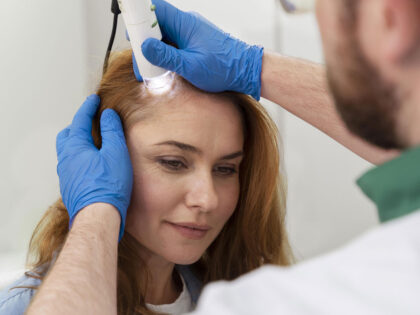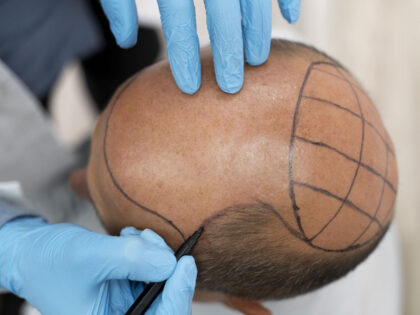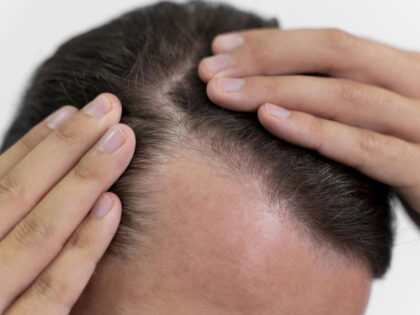The Science Behind Hair Growth: Exploring the Hair Growth Cycle
-
admin
- Posted on

Hair is not just a superficial aspect of our appearance; it’s a complex structure with a fascinating growth cycle governed by intricate biological processes. Whether you’re trying to grow out your locks or simply curious about the science behind hair growth, understanding the hair growth cycle can provide valuable insights into this intricate phenomenon.
The hair growth cycle consists of three main phases: anagen, catagen, and telogen. Let’s delve into each of these phases to uncover the science that drives our hair’s growth and shedding.
-
Anagen Phase (The Growth Phase):
The anagen phase is the active growth stage of a hair follicle. During this phase, cells in the hair bulb divide rapidly, leading to hair shaft elongation. The duration of the anagen phase varies based on genetics and body location, lasting anywhere from two to seven years. Hair on the scalp generally has the longest anagen phase, contributing to its ability to grow long.
The root of hair growth lies in the hair follicle, a tiny pocket in the skin where hair is produced. At the base of the follicle is the dermal papilla, a cluster of specialized cells that supply nutrients and oxygen to the growing hair shaft. The matrix cells in the hair bulb multiply and differentiate, forming the different layers of the hair shaft.
-
Catagen Phase (The Transitional Phase):
After the anagen phase, the hair follicle enters the catagen phase, a transitional stage that marks the end of active growth. This relatively short phase, lasting about two to three weeks, involves the regression of the lower part of the hair follicle. The dermal papilla separates from the hair bulb, signaling the end of nourishment to the hair shaft.
During the catagen phase, the follicle shrinks, and the hair shaft becomes firmly anchored in the scalp. This sets the stage for the next phase of the cycle.
-
Telogen Phase (The Resting Phase):
The telogen phase is a resting period for the hair follicle. Lasting around two to four months, this phase is characterized by the absence of active growth. The hair remains in the follicle but is no longer anchored to the dermal papilla. Instead, a new hair begins to form beneath it.
Approximately 10-15% of our hair follicles are in the telogen phase at any given time. It’s normal to shed around 50-100 telogen hairs daily as part of the natural hair renewal process. Factors such as stress, illness, hormonal changes, and even changes in seasons can influence the number of hairs in the telogen phase.
Following the telogen phase, the cycle restarts with the anagen phase as the new hair begins to grow. The old hair is pushed out by the new hair, and the process repeats itself.
Understanding the hair growth cycle provides insights into why hair loss occurs and how treatments targeting hair growth work. Conditions like androgenetic alopecia (male or female pattern baldness) disrupt the cycle by shortening the anagen phase and prolonging the telogen phase. This leads to thinner, shorter hair over time.
Hair growth products often work by extending the anagen phase, promoting blood circulation to the hair follicles, and providing essential nutrients. This approach can improve the overall health of hair and encourage longer, stronger growth.
In conclusion, the science behind hair growth is a dynamic interplay of cellular activity, hormonal regulation, and genetic predisposition. By appreciating the intricacies of the hair growth cycle, we can better understand how to care for our hair and address concerns related to hair loss. Whether you’re aiming for luscious locks or seeking solutions for hair thinning, a solid grasp of the science behind hair growth empowers you to make informed decisions about your hair care regimen.





